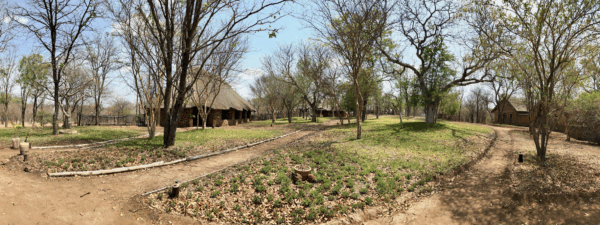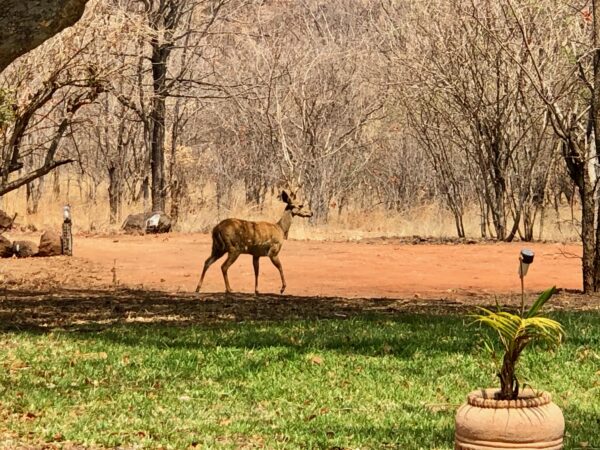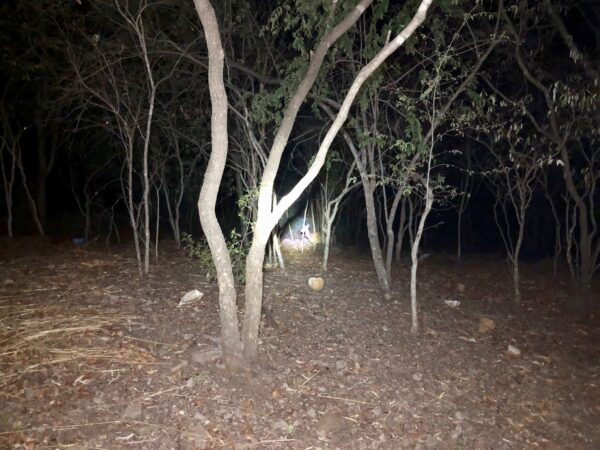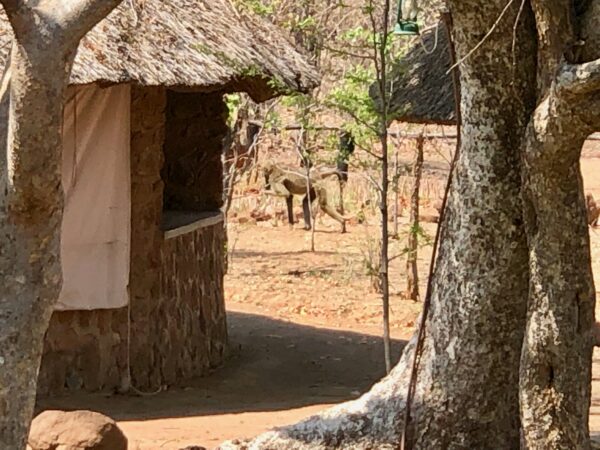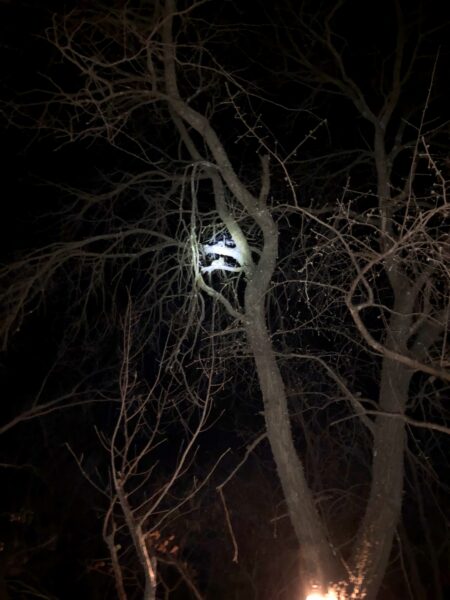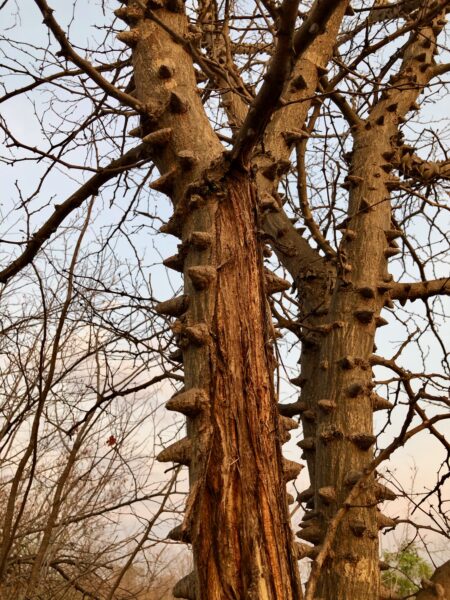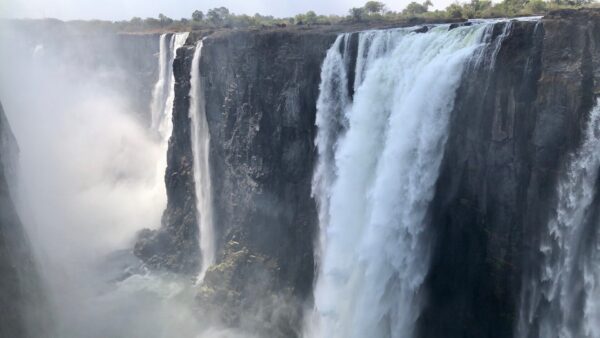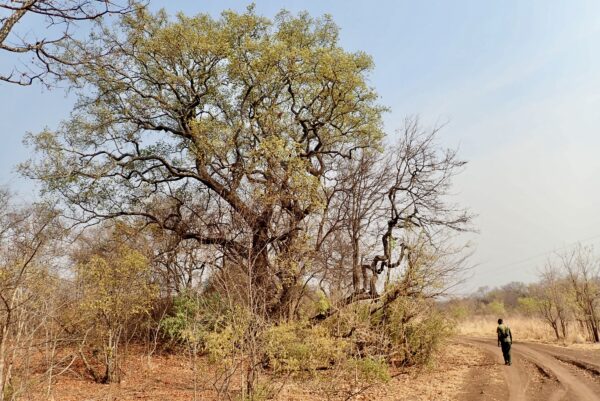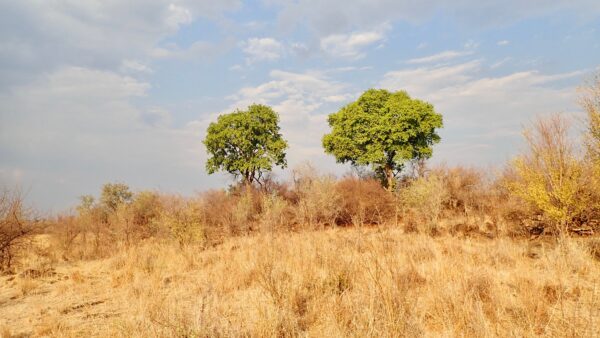Visit to Africa Centre for Holistic Management (2)
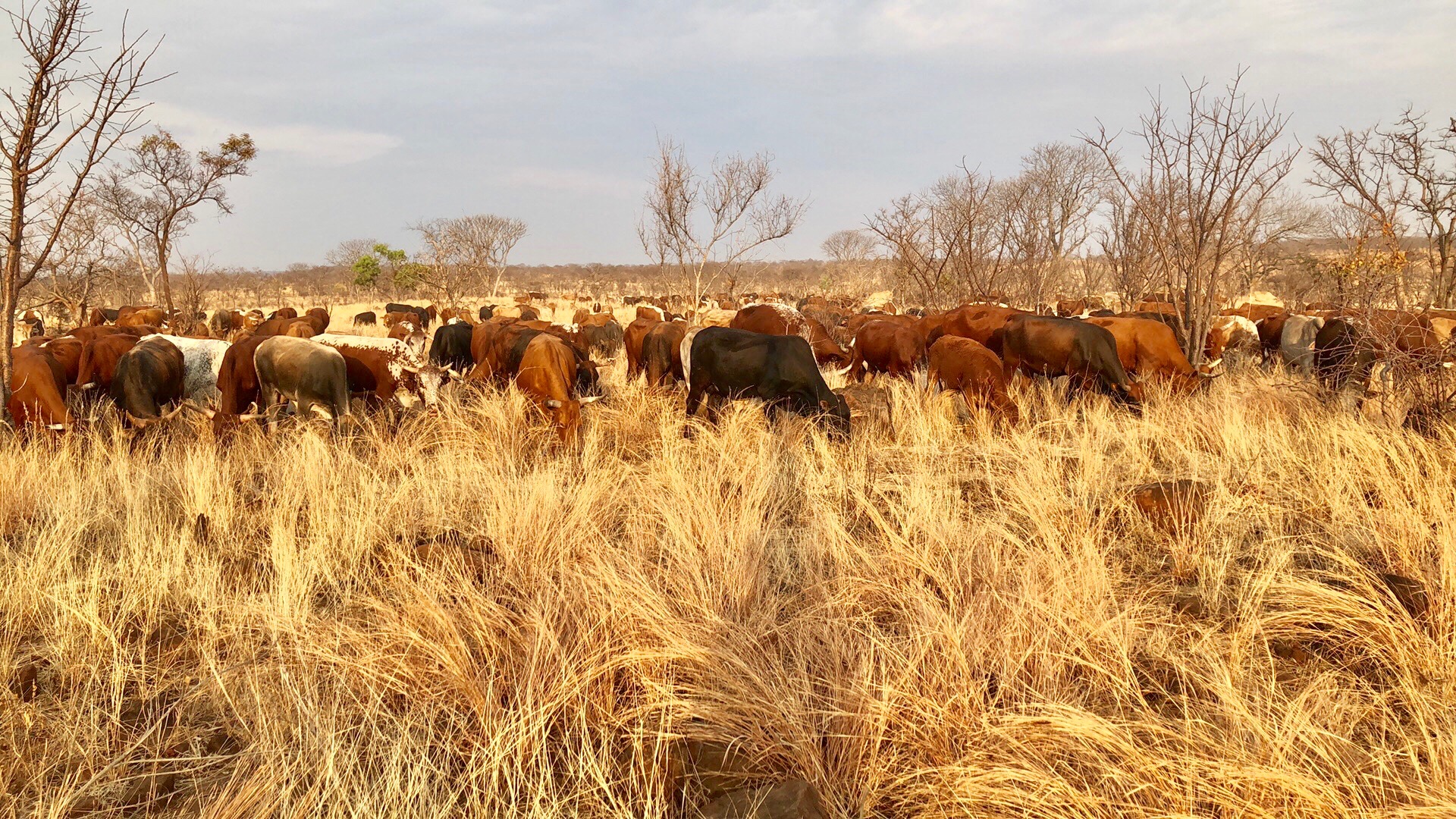
Here is the paddock #1 managed with holistic management by ACHM.
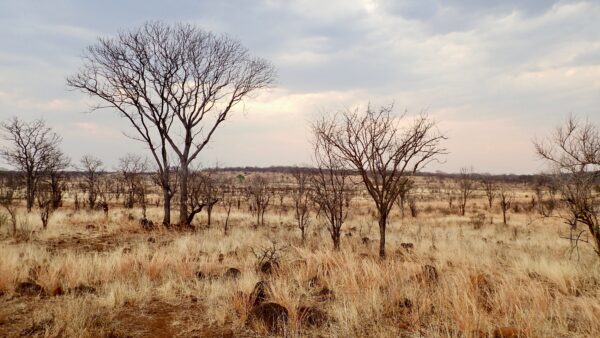
On the ungrazed area, overrested plants are dominant.
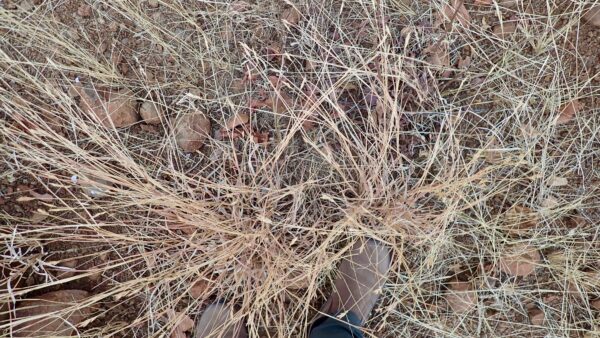
If you leave the overrested plants without grazing, the grass regeneration will be suppressed, and it will lead to the formation of soil capping.
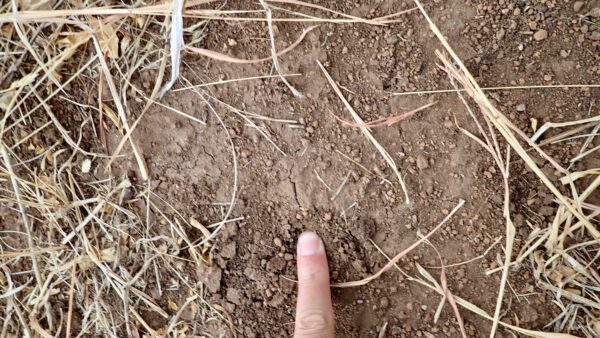
Capping is a symbiotic form of photosynthetic algae, fungi, lichen, etc., which forms a hard crust at the surface of bare land. Although it was sometimes considered as the initial stage of primary succession by some narrow-disciplined ecologists, in a more global context of holistic management, it is considered instead as the symptom of desertification.
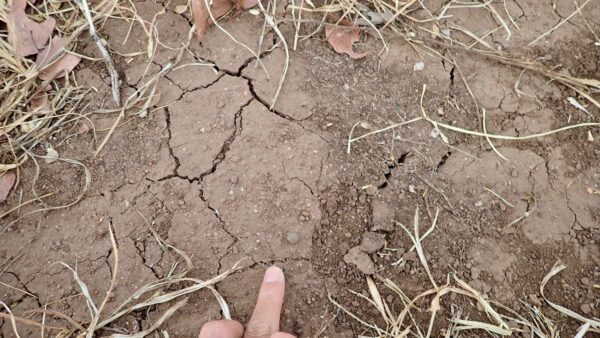
The crack is the sign of severe aridity. Once you remove the capping, you can find the real texture of soil beneath.
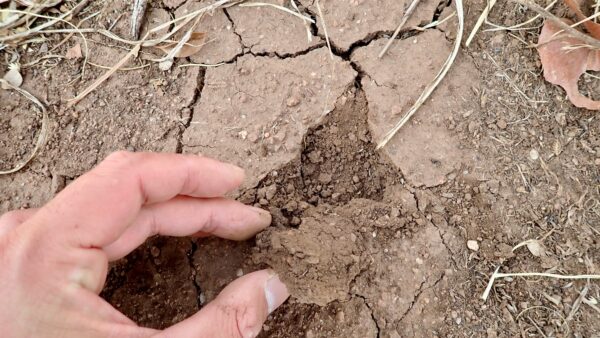
The traditional view on the capping contradicts the conception in holistic management. The capped soil was misunderstood as the primary stage of succession, therefore, interpreted as a sign of vegetation recovery. Actually, the more capping soil expands, the more the overall ecosystem degenerates.
This field was burnt after a leakage accident, burning the adjacent grassland. Now we can see there is a regeneration of grass because the overrested parts were burnt down, which was traditionally used to maintain the grassland landscape in this region.
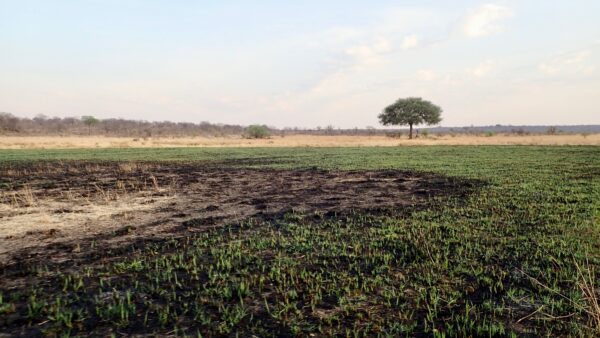
Though, taking a closer look, we can understand that the firing actually compacts soil and promote the capping. Therefore, it is a misconception in traditional knowledge that only takes a limited phenomenon, the short-term regeneration of grasses, rather than the global consequence that promotes the desertification process over the years.
To my surprise, cows can live on dried dead grass and leaves during the dry season.

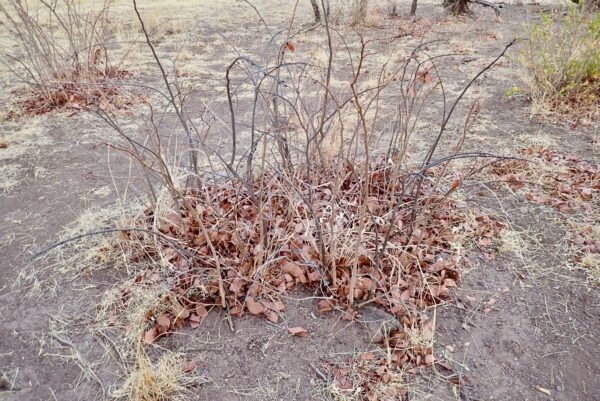
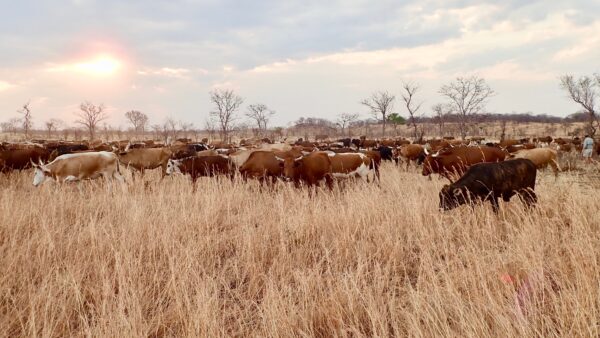
The aboveground parts of vegetation during the dry season are mostly this dried biomass except for tree trunks. Therefore, it is noteworthy that it is impossible to overgraze the plants during the dry season: the cattle are eating only the overrested parts and clearing the plant tops for the new growth.
By intensive controlled grazing during the dry season, there are significant changes in soil structure and cover: The capped soil is destroyed by hoofing. Overrested plants are removed and put down by trampling. Vegetal organic matters are transformed into animal dung with abundant microbial activities coming from the livestock’s gut microbiota and spread over the land. These transformations make the vegetation ready for a brand-new vigorous growth during the rainy season.
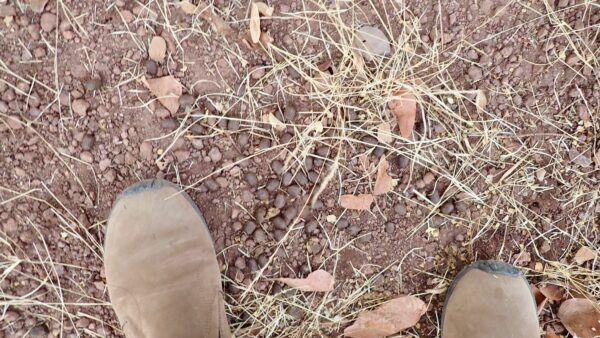
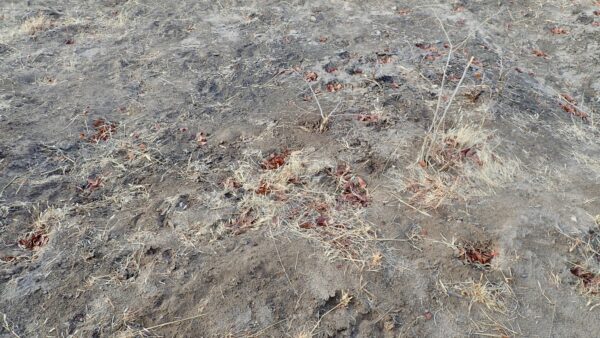
Here is the three-circle demo that explains the process of regeneration and incites people for decision making.
From right to left: bare land with soil capping; hoofed soil and capping disturbed; and hoofed soil, trampled grass and land cover (with trampled grass and multiple-level vegetation)
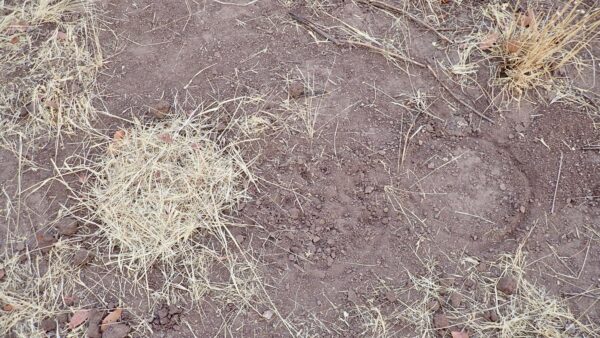
The effect of water erosion differs between these circles.
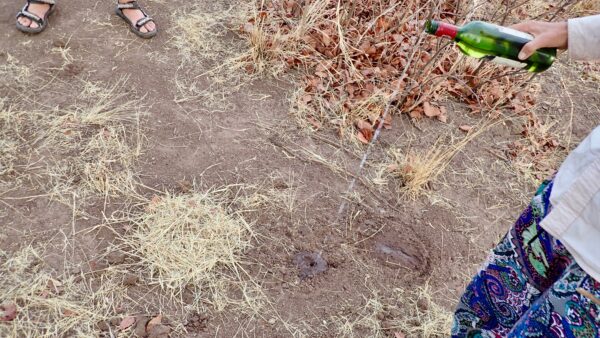
Guess the effect. I recommend you try by yourself to figure out the answers and to MAKE DECISION which circle you want in your land to live on that.
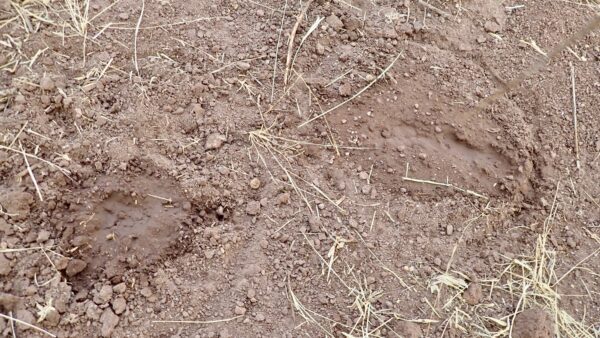
We spent a night at the paddock #1 to experience what it is like to be a herder.
We had 428 cows yesterday, but today a herd has joined and become 563.
During the night, we keep livestock inside of kraal, a kind of fence made of durable textile, to protect them from hyenas and lions.
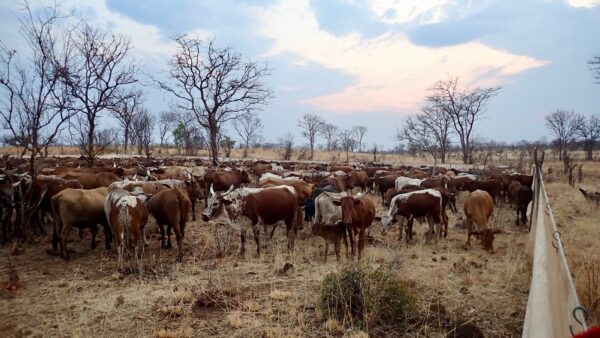
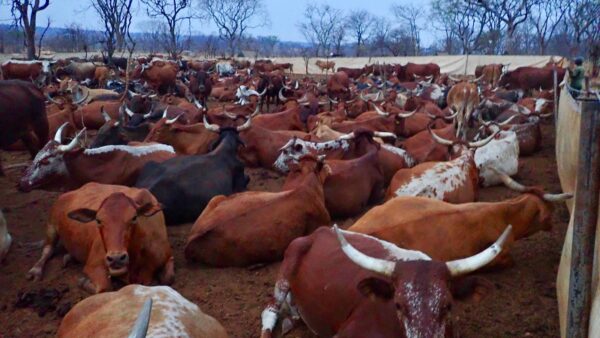
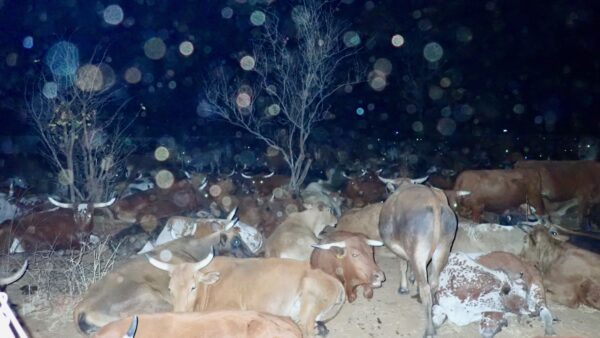
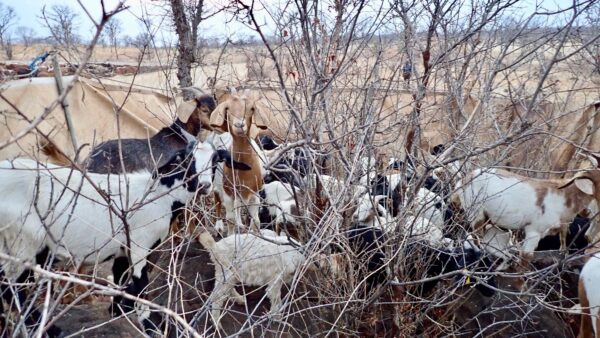
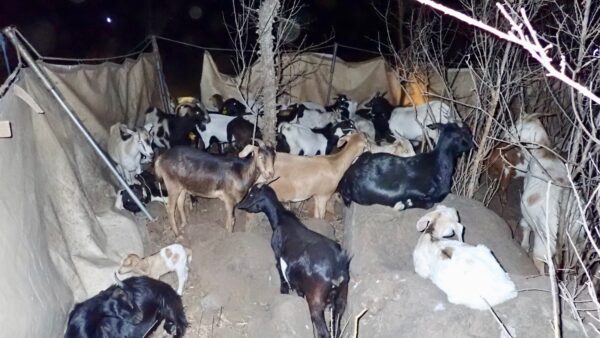
The dogs are excellent shepherds and trustful night guards.
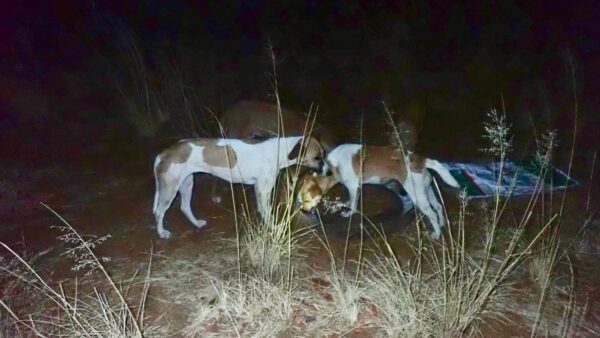
As it gets dark, we heard the cry of hyenas.
The stars of the southern hemisphere were exotically beautiful.
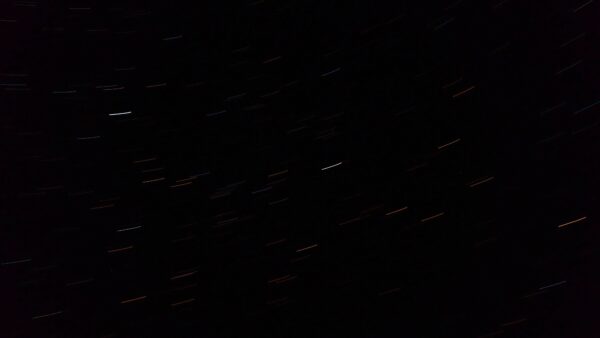
Since new herd has joined, the cattle were excited, and we had to look after them for the whole night.
The next morning, the cows seemed to calm down.
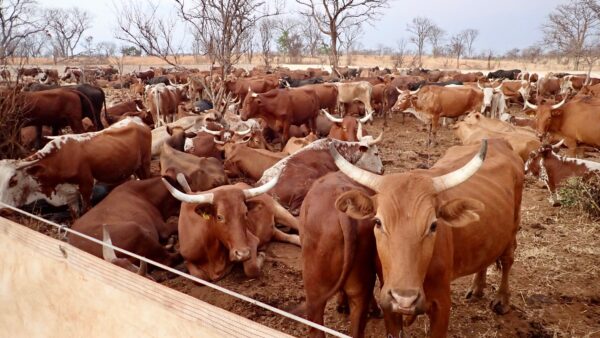
The goats are also doing fine.
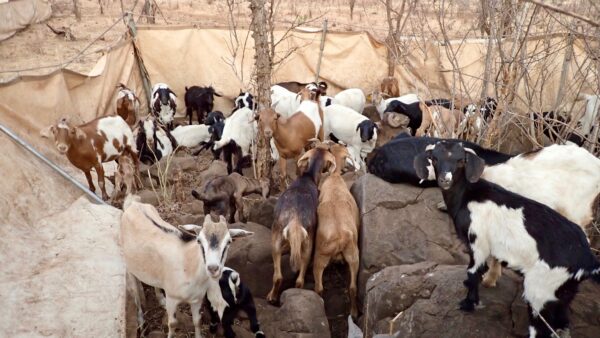
The water is scarce here, and my water tank was filled with thirsty ants.
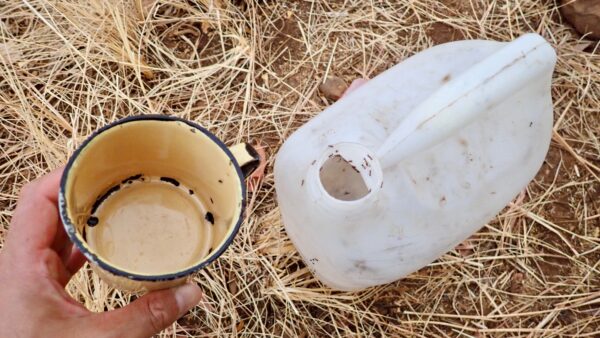
Around 6 am, we free the cattle and goats out of the kraal, and another grazing journey starts.
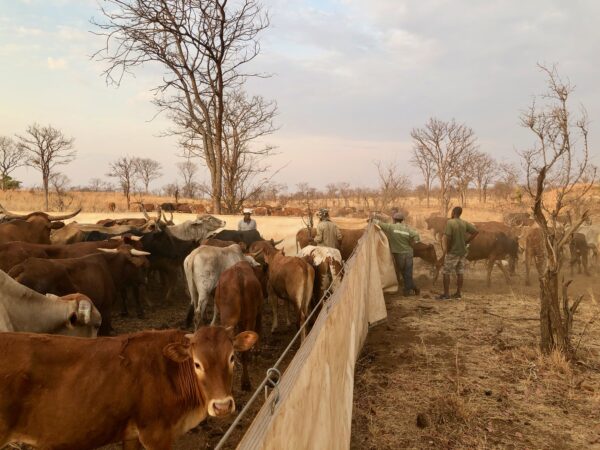
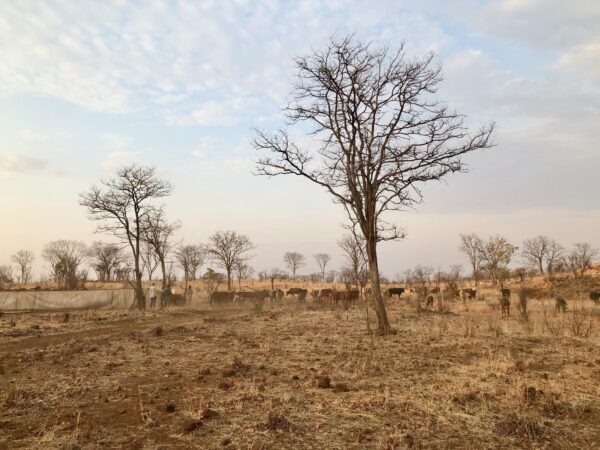
This is the paddock #1 before grazing. We have just released the cattle and goats, and they are coming in the field.

They proceed like an army and continue to graze overrested grasses, trample them down and leave the dung and urine.
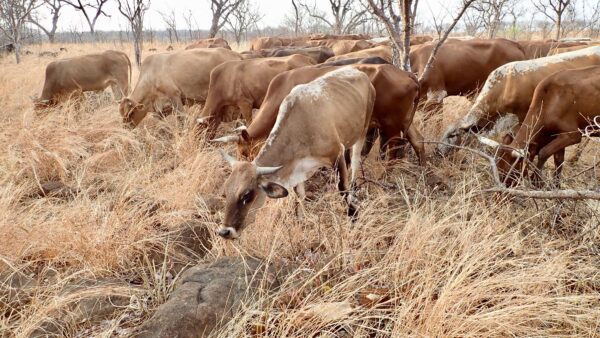
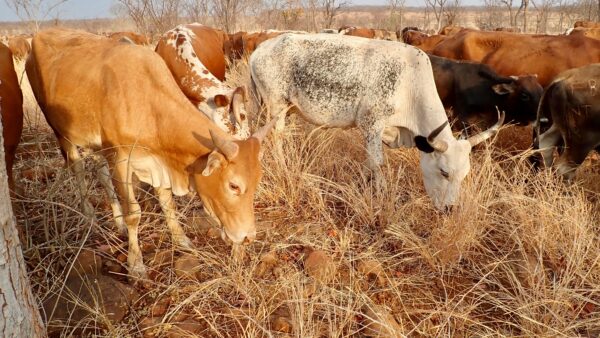
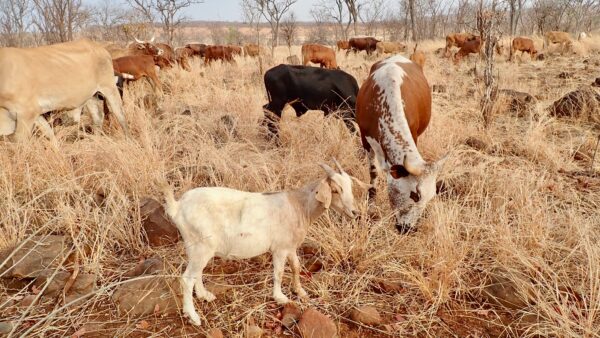
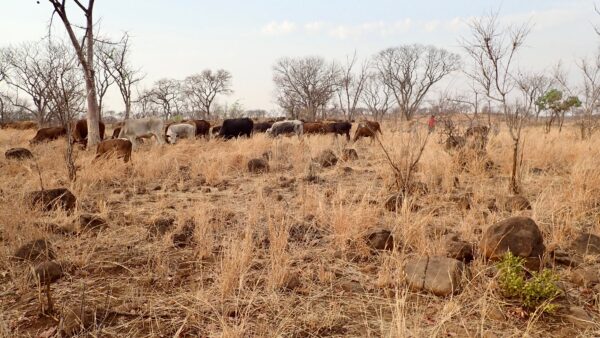
Hooves of cattle that destroyed the capping of soil.

Five days later, after a few sequences of herd moves on the site, here is the result of grazing, hoofing, and trampling.
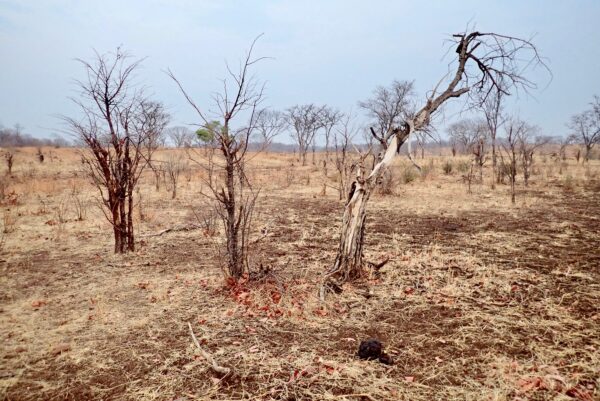
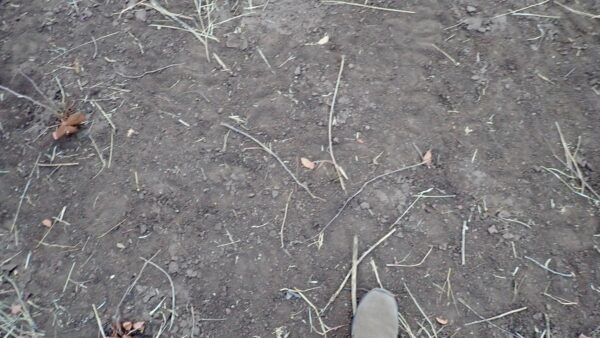
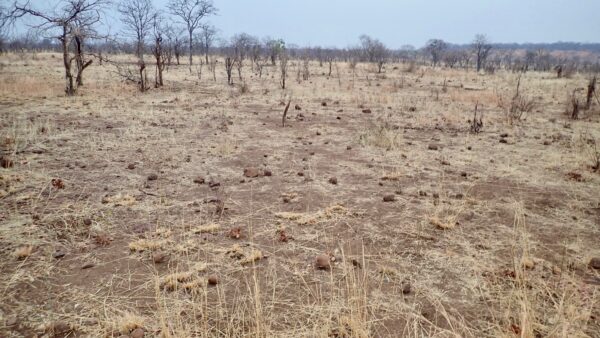
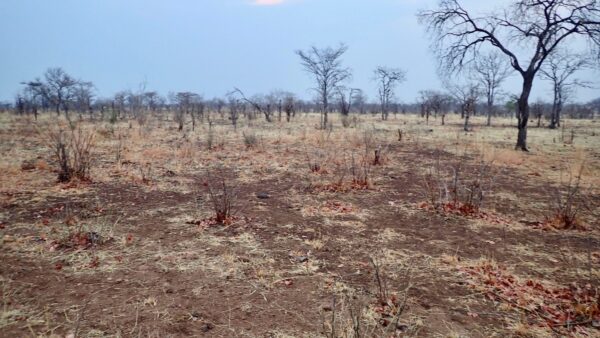

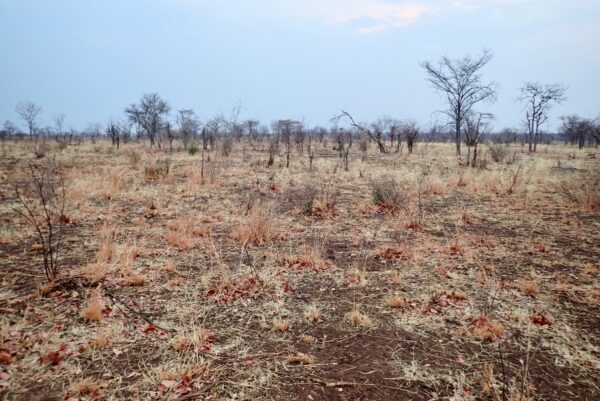
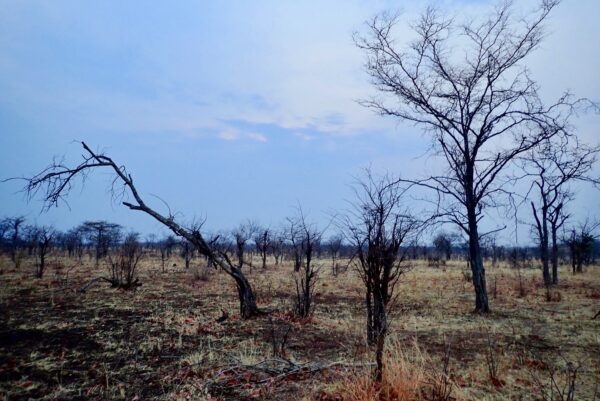
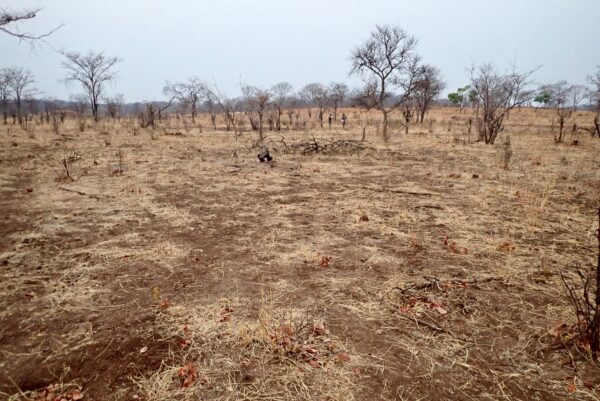
The close-up after grazing. Only the overrested parts are eaten, and the grassroots are intact. We cannot overgraze the plants during the rainy season.
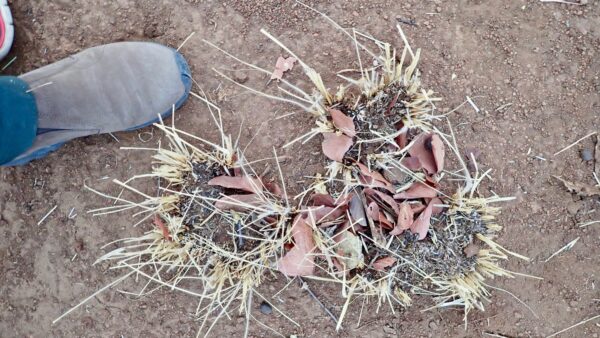
Animal dungs and urine are left on the surface with dried leaves.
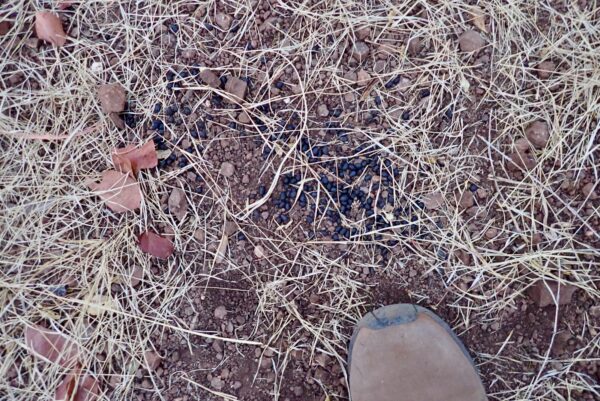
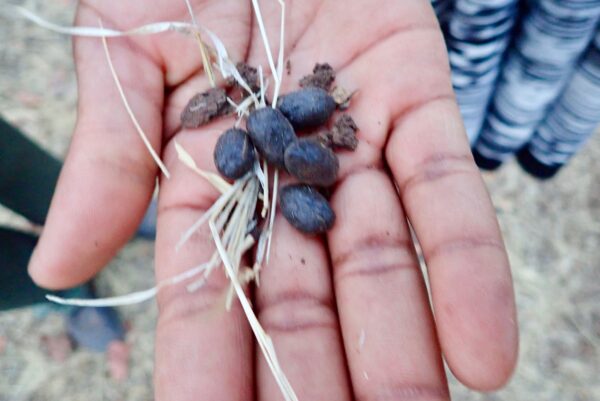
In a different location, here is the comparison between above: without grazing and below: after grazing, trampled down, and soil covered by residual grass.
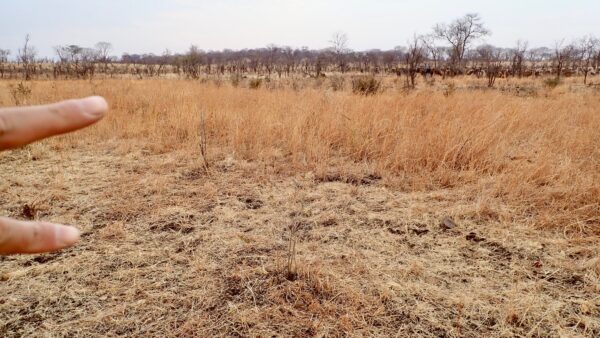
For the water, they are currently using the pumping system with a generator.
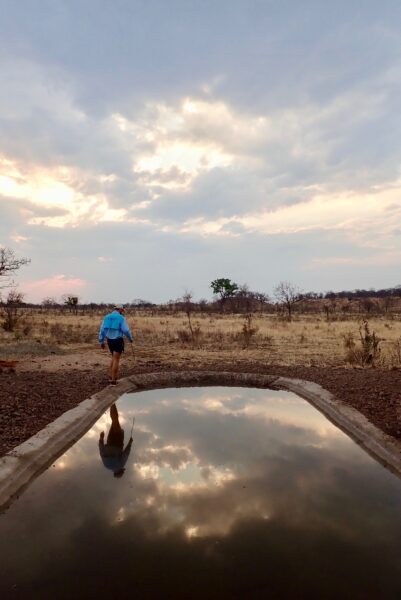
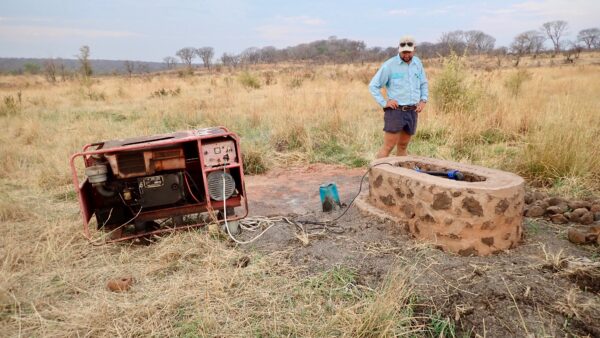
At ACHM, we started to create a Synecoculture garden. Here is the conventional way of monoculture garden that we are going to transform into the mixed and dense vegetation of 200 edible plant species.
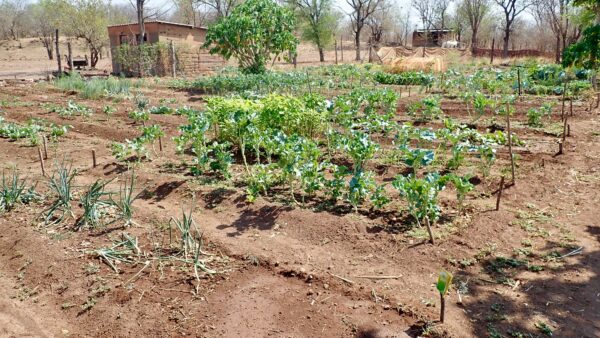
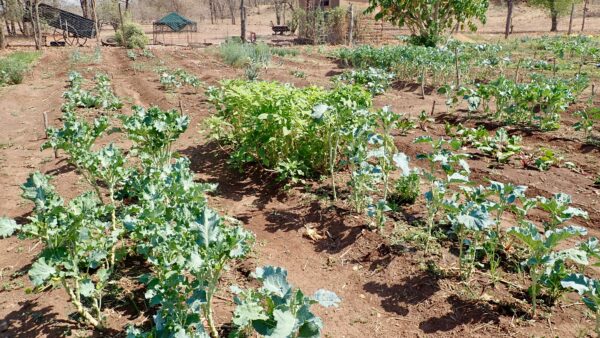
We met the gardener who explained there are about 40 species cultivated in this area.
I explained the method of Synecoculture and discussed how we could gradually proceed to cover the barehand with various vegetation.
Kraals surround this section, bare land and dry grasses remain. We can get a combination of holistic planned grazing and Synecoculture.
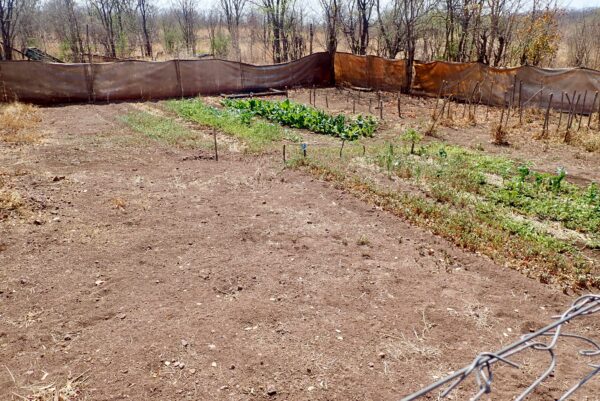
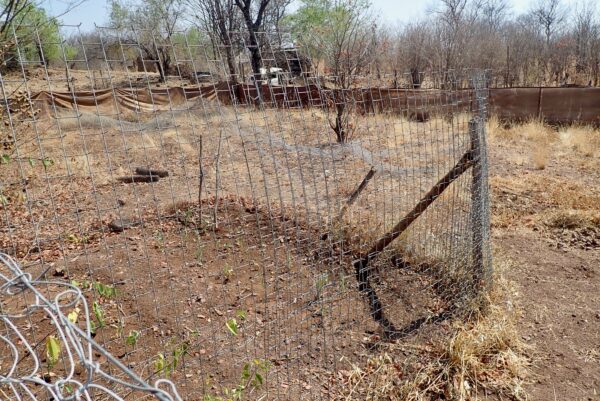
Here is another garden at the center of ACHM that we will also transform into a Synecoculture oasis. There are frequent visits by wildlife, including bushbuck, baboon, and other monkeys, sometimes even elephants and lions.
